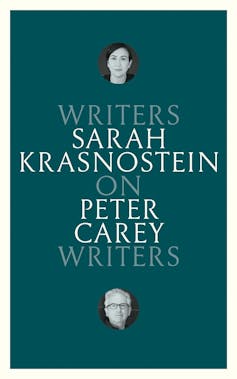Possession and devotion inform Sarah Krasnostein's compelling reinterpretation of Peter Carey's art
- Written by Tony Hughes-d'Aeth, Professor, Chair of Australian Literature, The University of Western Australia

Sarah Krasnostein’s On Peter Carey is the 12th instalment of Black Inc.’s highly readable series, Writers on Writers. The series is nicely conceived, as it pitches Australian writers not just against each other, but across a generational divide.
There is something quite exciting about hearing the intimate thoughts of Nam Le on David Malouf, Alice Pung on John Marsden, Christos Tsiolkas on Patrick White, Michelle de Kretser on Shirley Hazzard, Geraldine Brooks on Tim Winton, and Stan Grant on Thomas Keneally.
Review: On Peter Carey: Writers on Writers – Sarah Krasnostein (Black Inc.)





